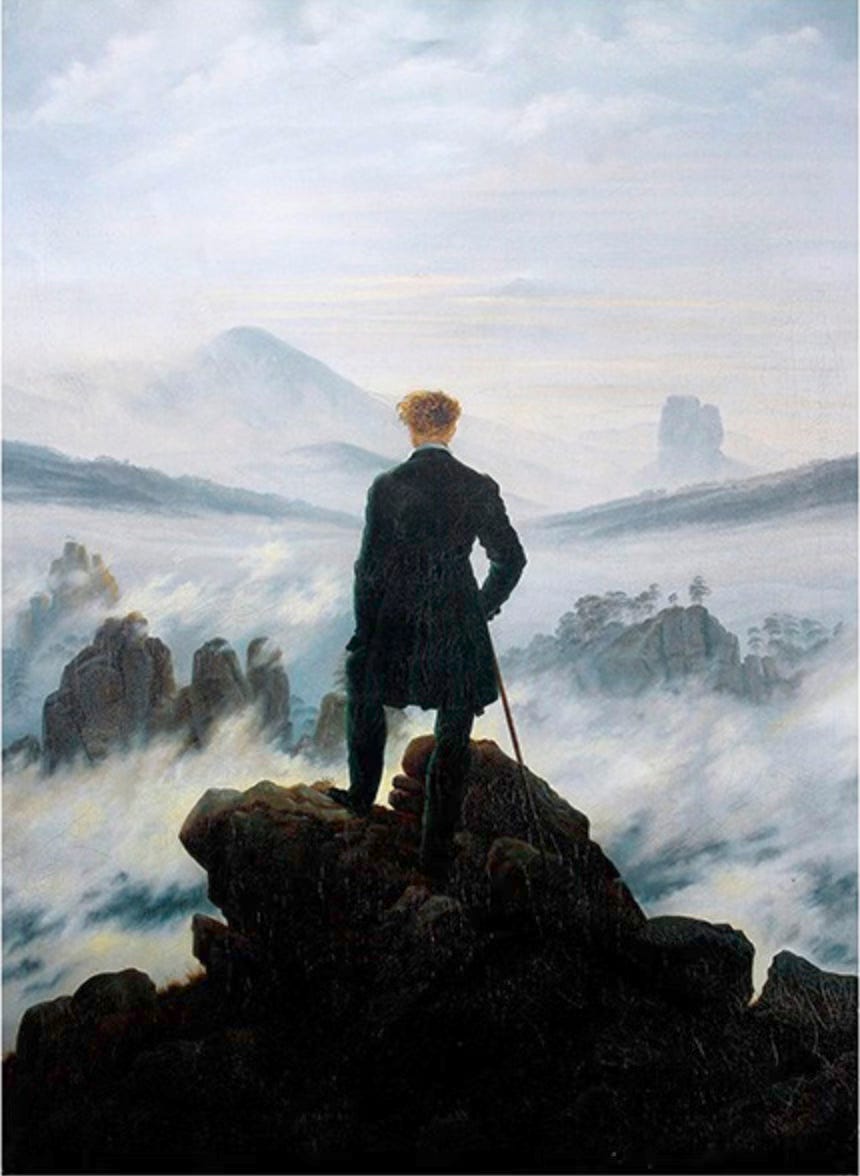It happened to Rembrandt, and it happened to Caspar David Friedrich. Towards the end of his career, Germany’s greatest painter of the Romantic era found he had become unfashionable. Too gloomy, too dark, too melancholy, too obsessed with foggy, wintry views. Friedrich regretted the loss of sales but reflected that it was only a matter of time until his detractors were bored with autumn too. Soon they’d have had enough of summer and eventually be fed up with spring.
That’s the way it was with fashion. But Friedrich was philosophical: “I spin my coccoon around me and leave it for time to decide what will come out, whether a bright butterfly or a worm.”
What has emerged, with the 250th anniversary of the artist’s birth, is a kind of monster. There have been dozens of exhibitions featuring his work, the three biggest being CDF: Infinite Landscapes at the Alte Nationalgalerie, Berlin; CDF: Art for a New Age at the Hamburger Kunsthalle; and CDF: The Soul of Nature, at the Metropolitan Museum of Art, New York. In addition, there have been smaller, more focussed shows in cities such as St. Petersburg, Weimar, Winterthur and Dresden.




